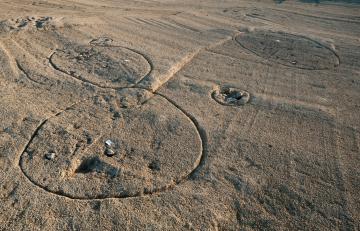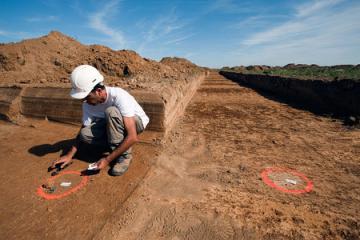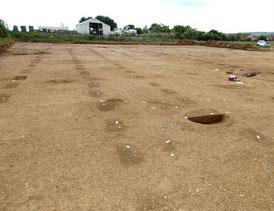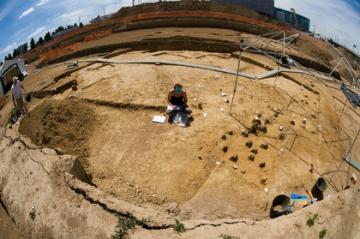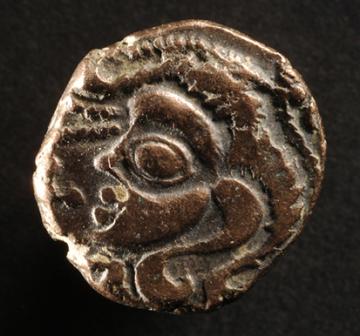You are here
News
- (-) Remove Iron Age filter Iron Age
- (-) Remove Discoveries filter Discoveries
In advance of the construction of a housing project by Nexity Foncier Conseil, in Champagne-sur-Oise (Val-d’Oise), a team of Inrap archaeologists is excavating a one hectare surface, under the curation of the State (Drac Île-de-France).
In advance of construction work to protect the lower Lez Valley from flooding, a team of Inrap archaeologists is conducting an excavation, curated by the State (Drac Languedoc-Roussillon), of more than two hectares of the eastern part of a large Iron Age village.
Before the construction of the Seine-North of Europe waterway under the technical direction of the Voies navigables de France, and curated by the State (Drac), the French National Institute of Archaeological Research (Inrap) is carrying out a programme of archaeological evaluations, the most extensive at present in Europe.
An Inrap team has just excavated a Gallic cemetery in Attichy in the Oise. This excavation, curated by the Regional Archaeological Service (Drac Picardie), prior to the exploitation of a quarry of aggregates, has above all brought to light the graves of two eminent Celtic personages.
Gevrey-Chambertin, located 12 km from Dijon, is world famous for its Burgundy wine. Viticulture has been practiced there since the Gallo-Roman period.
A team of prehistorians from the Inrap has discovered traces of some of the last prehistoric hunter-gatherers, in the 15th arrondissement of Paris.The 5,000 m2 excavation, curated by the Regional Archaeology Service (Drac Île-de-France), is located on Henry-Farman Street on the site of a future waste separation centre.
An Iron Age farm at Laniscat (Côtes-d'Armor) was recently discovered by a team from the INRAP. An exceptional Armorican Celtic coin hoard was also found. The excavation, preceding road building, was curated by the Regional Archaeology Service.
Of the 300 excavations conducted yearly by Inrap, approximately 30% concern the Iron Age, a period which is currently the subject of intense research activity. While we cannot reduce the study of Celtic society to its elites, mortuary rites and aristocratic burials still offer the most spectacular discoveries. Inrap recently excavated several individuals buried with their ceremonial or combat chariots.



